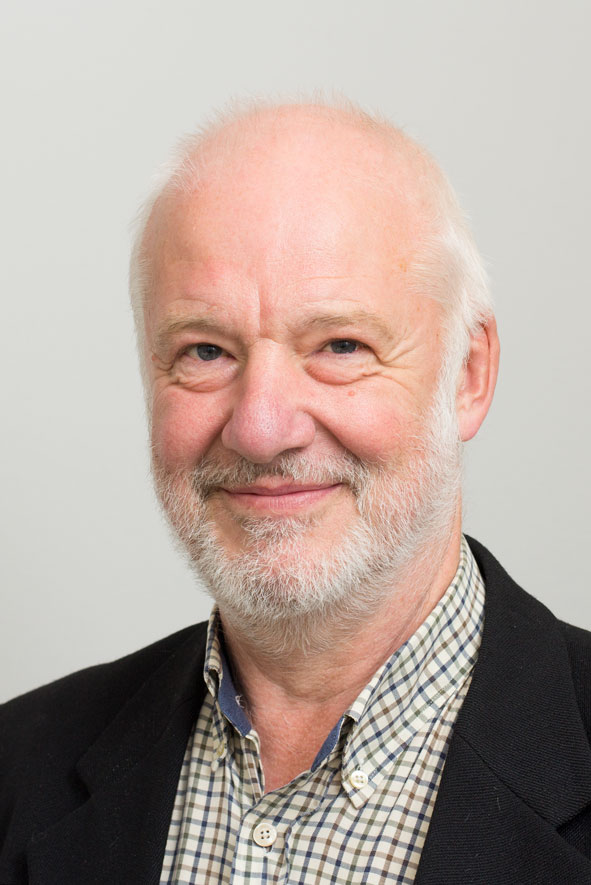We have the expertise – South Africa has the patients
A cooperation agreement between medical doctors and researchers in Aarhus and Johannesburg in South Africa has given Aarhus University access to a patient basis that would normally be out of reach in Denmark. At the same time, the agreement helps the South Africans build an academic environment.

There is neither talk of philanthropy nor exploitation of 'poor Africans' when a handful of vascular surgeons, urologists, heart specialists and dermatologists from Aarhus University / Aarhus University Hospital fly to and from Johannesburg in South Africa during these months to collaborate with the Africans on e.g. HIV patients.
The South African partners come from Witwatersrand University (Wits) in Johannesburg and from Cape Town University. Wits has recently appointed Michael Hasenkam, professor at the Department of Clinical Medicine at Aarhus University, as a visiting professor. This means that concurrently with daily life at Aarhus University, he is also regularly at Wits, and at the associated hospital, which has a patient basis of 8-9 million inhabitants. This provides a unique opportunity to bring together AU researchers and clinical issues as they crop up in Africa:
"At the hospital in Johannesburg, we are currently seeing a pattern where HIV patients taking antiviral medicine have begun to display some strange symptoms. They have blue arms, expanded coronary arteries or skin rashes with vascular causes. Because there are so many of them, a picture forms of a new type of arteriosclerosis or hardening of the arteries that we are not aware of, and which we would never have noticed ourselves, because the group of patients in Denmark is small," says Michael Hasenkam.
In this particular case, Hasenkam took the initiative for his Danish professor colleague Consultant Anne-Mette Hvas from the Department of Clinical Biochemistry to take a flight to Johannesburg with a view to investigating whether the strange symptoms were an as yet unknown side effect of the antiviral medicine, or whether they were witnessing a completely new type of HIV disease – a HIV vasculopathy.
We both learn
"This has led to new studies and what is important here is that the collaboration is a win-win. They have the patients; we have the expertise, which will spread around the academic environments at Wits. This gives both parties a rare opportunity to learn," says Michael Hasenkam, who is also a former vice-dean for the now defunct area of knowledge exchange.
Another example of a win-win collaboration concerns urinary deformities in children. This is frequently found in South Africa, but almost eradicated in Denmark, where the deformity is typically spotted at scanning early in a pregnancy, “so that it, as a rule, it ends there”, as Hasenkam puts it.
Because he was involved in the South African academic environment, Hasenkam invited Professor Henning Olsen from the urological research unit at Aarhus University to visit Wits. Partly to meet the patients, of which there are only a few back in Denmark, and partly to teach the Africans about the treatment of children with congenital deformities. The visit has now led to a large congress being held in South Africa, at which medical doctors and professionals will share knowledge about a field of research that is needed in the poor parts of the world, while at the same time, expertise in rich countries is in danger of running dry.
Who is going to make things happen in practice?
According to Michael Hasenkam, the reason the cooperation agreement between Aarhus University and Witwatersrand University works so well is because the agreement itself is specific and action-oriented, as opposed to a number of other cooperation agreements, which he has seen get left on the shelf because there was too far from intentions to action.
"It means a lot to have someone on site. If nobody really knows the infrastructure in detail, then who is going to make things happen in practice? You have to have someone who really has an opportunity to tie both ends together, and you have to strive to achieve a sense of equality," says Michael Hasenkam with reference to the apparently unequal set-up, where Johannesburg has the patients and Aarhus University has the experts.
This is an area where South Africa suffers from the practice of systematically headhunting the most talented doctors, who are key persons in an academic environment, to the private hospitals. Once in the private sector, they deliver treatment like a production line, while research stands still. Because of this, Michael Hasenkam wishes to expand the cooperation agreement to include the private hospitals, who can deliver the finances – and who also need medical progress, of course.
"There is so much potential in this and South Africa is extremely important for us. There are far greater resources than we imagine, and also more than they imagine themselves," says Michael Hasenkam.
Medical doctors and researchers who are interested, or have questions and ideas for collaborating with South Africa, are welcome to contact Michael Hasenkam.
Read more about the cooperation agreement:
- In 2015, Aarhus University entered into cooperation agreements with two of South Africa’s leading universities, the Witwatersrand University (Wits) in Johannesburg and the University of Cape Town.
- This has led to a number of collaborative projects – not just in the area of health, but also within areas such as cultural heritage, bioscience and biomedicine.
- The research projects are financed by the university's South Africa pool, where researchers have been able to apply for up to DKK 60,000 per project.
Contact:
Professor of Clinical Medicine, Michael Hasenkam
Department of Clinical Medicine, Aarhus University
Witswaterrand University in Johannesburg.
Email: hasenkam@clin.au.dk
Direct tel.: (+45) 7845 3089
Mobile: (+45) 4091 3616
